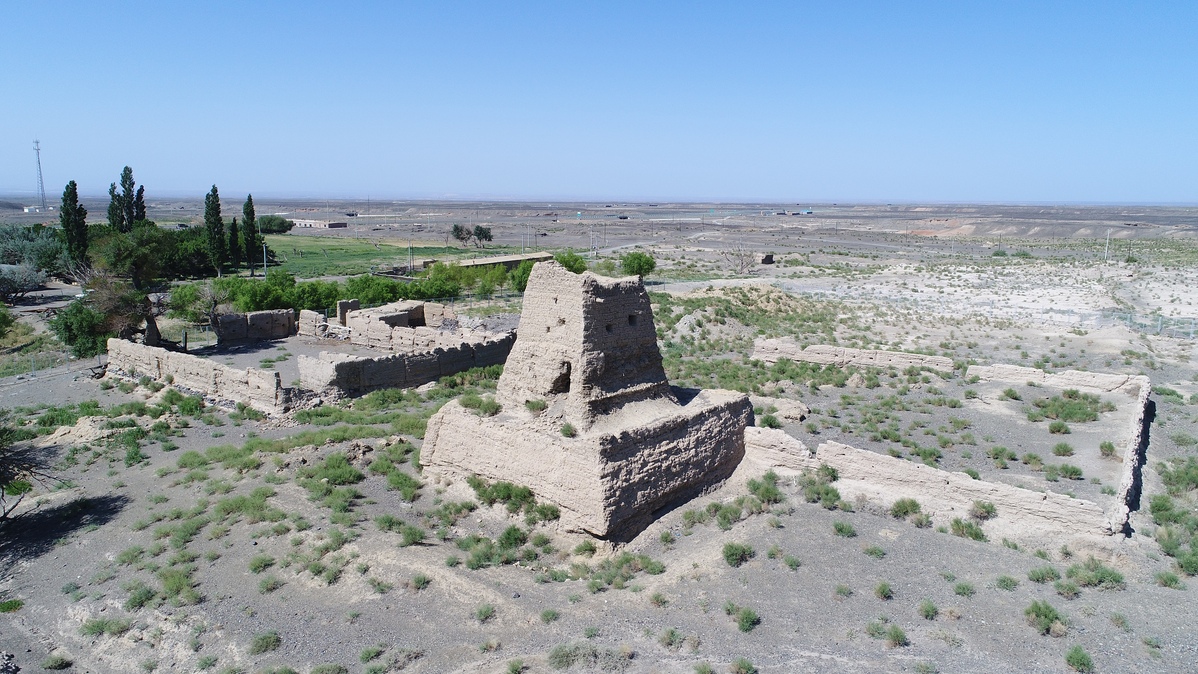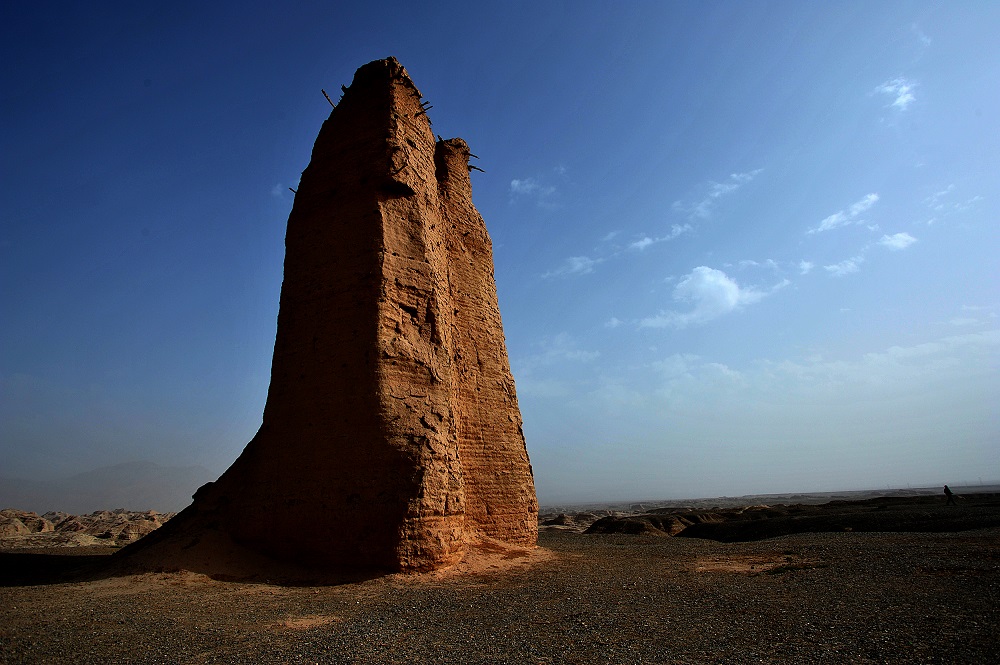Xinjiang Uygur autonomous region: Great Wall beacons remain standing along the ancient Silk Road


Xinjiang's Great Wall resources are distributed over both its southern and northern parts, in 40 prefectures, counties and cities such as Turpan, Changji Hui autonomous prefecture, Yili Kazak autonomous prefecture, Kashgar prefecture, and Hotan prefecture, ranging from prosperous oases to inaccessible deserts and the Gobi territories.
Up to now, Xinjiang has 212 Great Wall sites comprising 186 beacon towers and 26 fortresses, according to China's third national cultural relics survey and the field survey on Great Wall resources in Xinjiang. In addition, more than 100 ancient beacon ruins discovered in Hami, Aksu prefecture, Bayingolin Mongolian autonomous prefecture and other places are likely to be recognized by the State and classified as part of the Xinjiang Great Wall defense system.
In recent years, archaeologists have discovered resources in China's ancient Great Wall from Xinjiang, confirming the effective management of the ancient Chinese dynasties (such as the Han and Tang dynasties) over the Western Regions, which includes the present-day Xinjiang.
The Han Dynasty (202 BC-AD 220) established the Protectorate of the Western Regions in Xinjiang, marking the beginning of the effective administration over Xinjiang by an inland dynasty of ancient China. Along the two sides of the ancient Silk Road, the Great Wall defense facilities, such as beacon towers and fortresses, were built to ensure regional peace and smooth passage. These structures dating back about 2,000 years have vanished over time.

By contrast, the more recent and more systematic facilities of the Great Wall in Xinjiang built during the Tang Dynasty (618-907) are in better condition. Four relic sites of Xinjiang from this time period have been included into the list of major national-level Great Wall sections. They are the Tuoxike Beacon Tower, Kiyakkuduk Beacon Tower, Kizilaaha Beacon Tower and the Mazartag Fortress.
Structures of the Great Wall in Xinjiang during Tang Dynasty were more complete, systematic and dense, and the function of taking care of travelers along the Silk Road was taken into account (the establishment of post stations), indicating that the Tang Dynasty's management of Xinjiang was strengthened.
Historically, the building materials of the Great Wall were generally made of local products. Due to Xinjiang's generally harsh geography and climate, the construction of the Xinjiang Great Wall consists of a combination of bricks, stones and rammed earth, as well as layers of tamarisk branches, reeds and sand, especially in desert areas.
- Symphony of Civilizations at Nishan
- Man arrested in Nanjing for secretly filming and sharing explicit videos
- Commemorative events, exhibitions held in Jiangsu to mark 80th anniv. of victory against Japanese aggression, fascism
- Chinese scientists develop non-invasive blood sodium tracker
- International deep space group founded in Anhui
- China activates emergency response to flooding in Zhejiang, Fujian





































